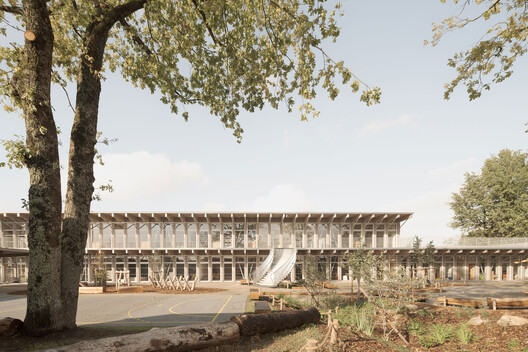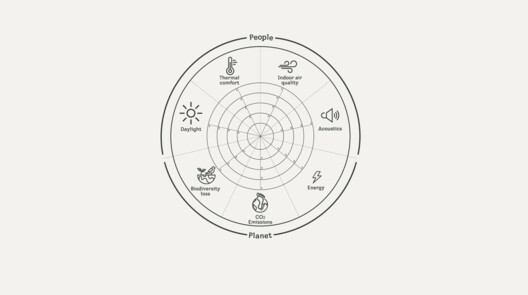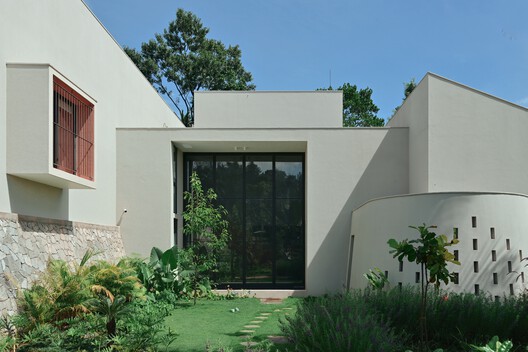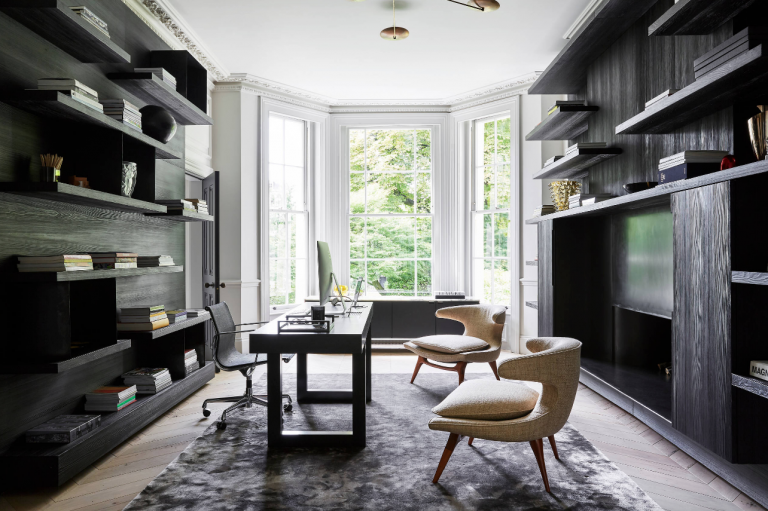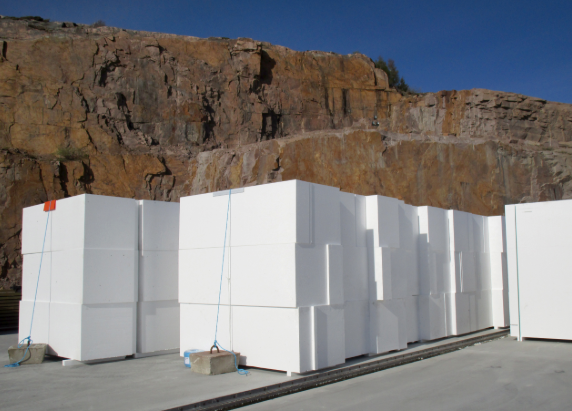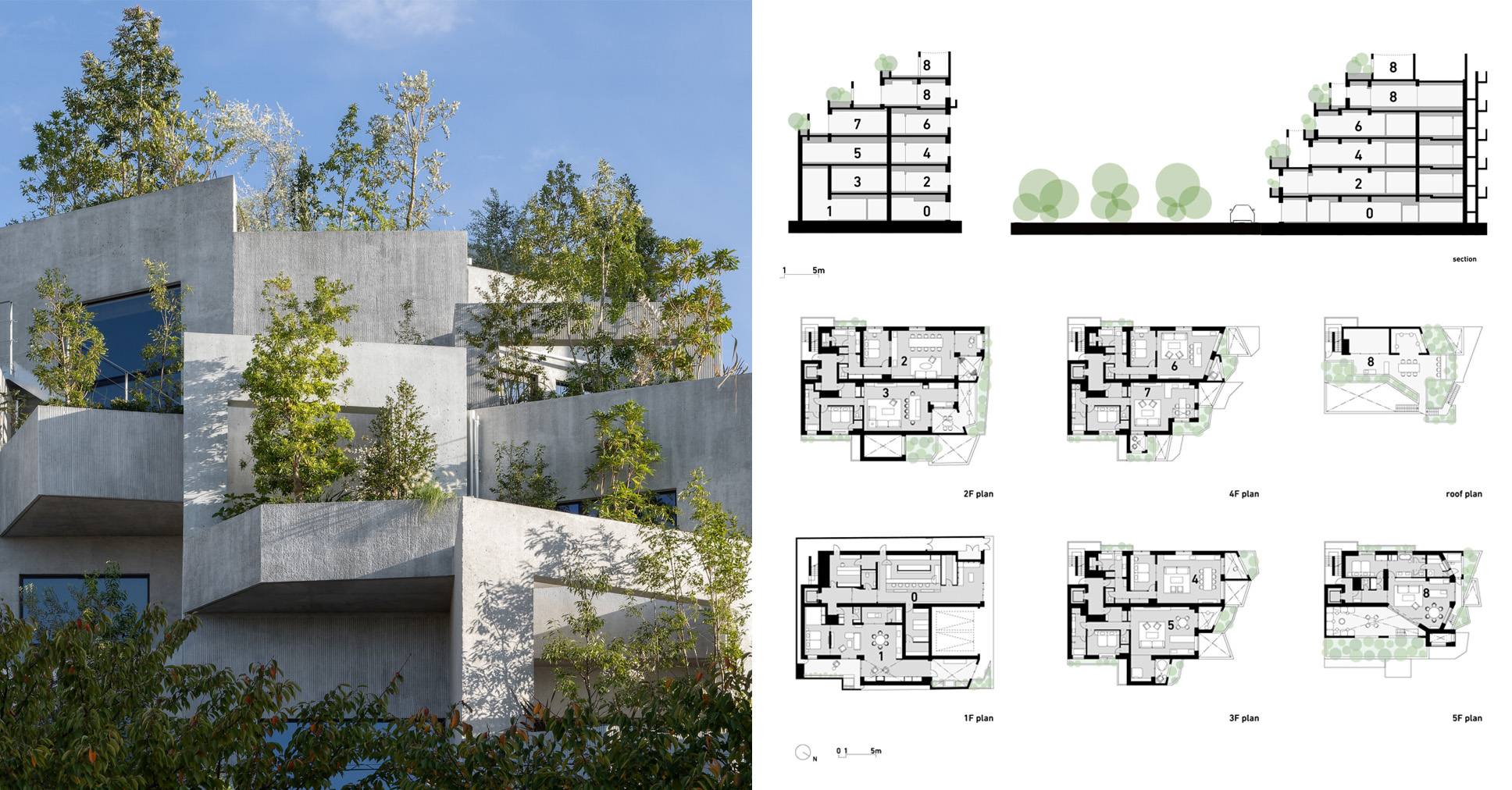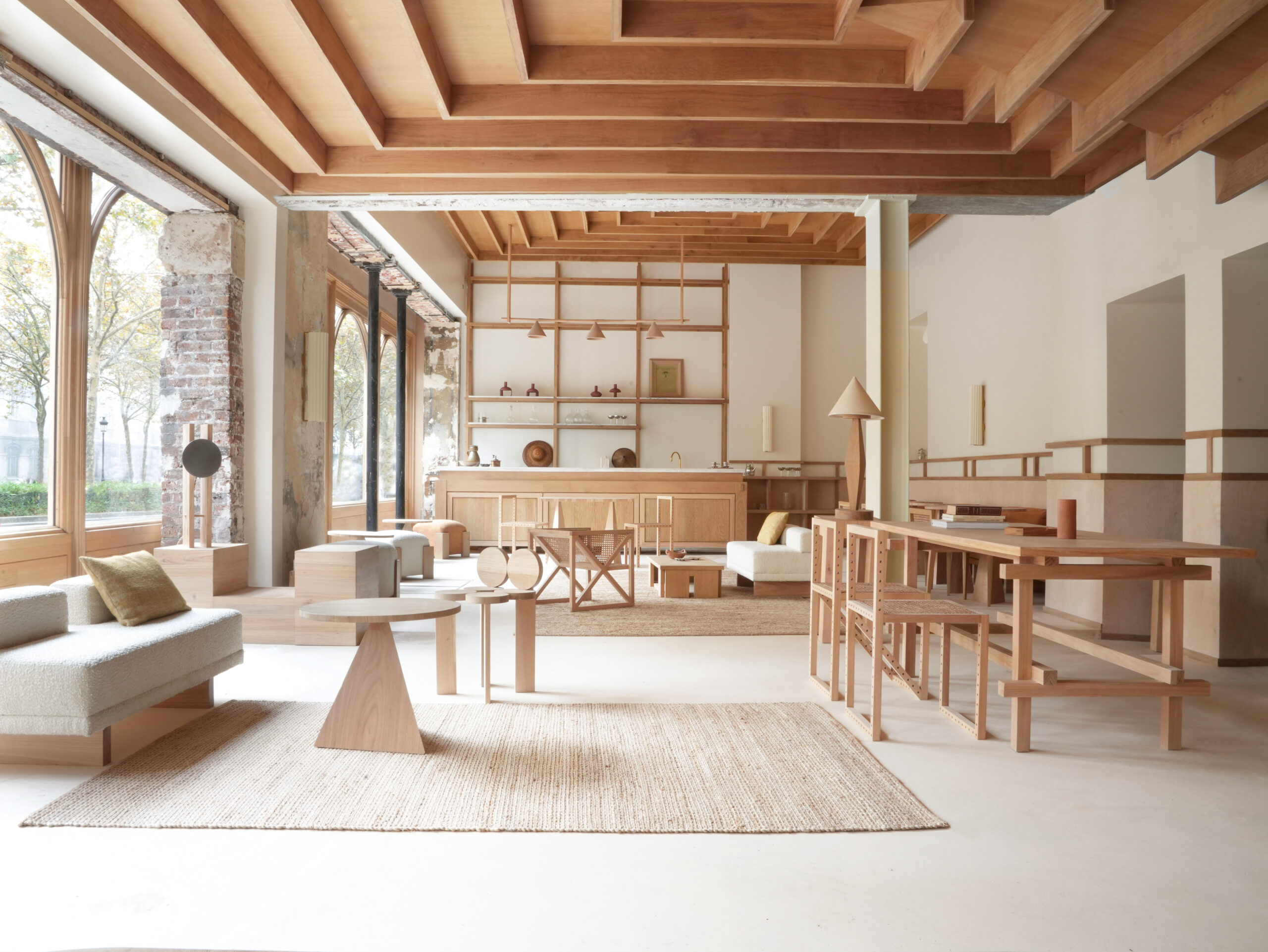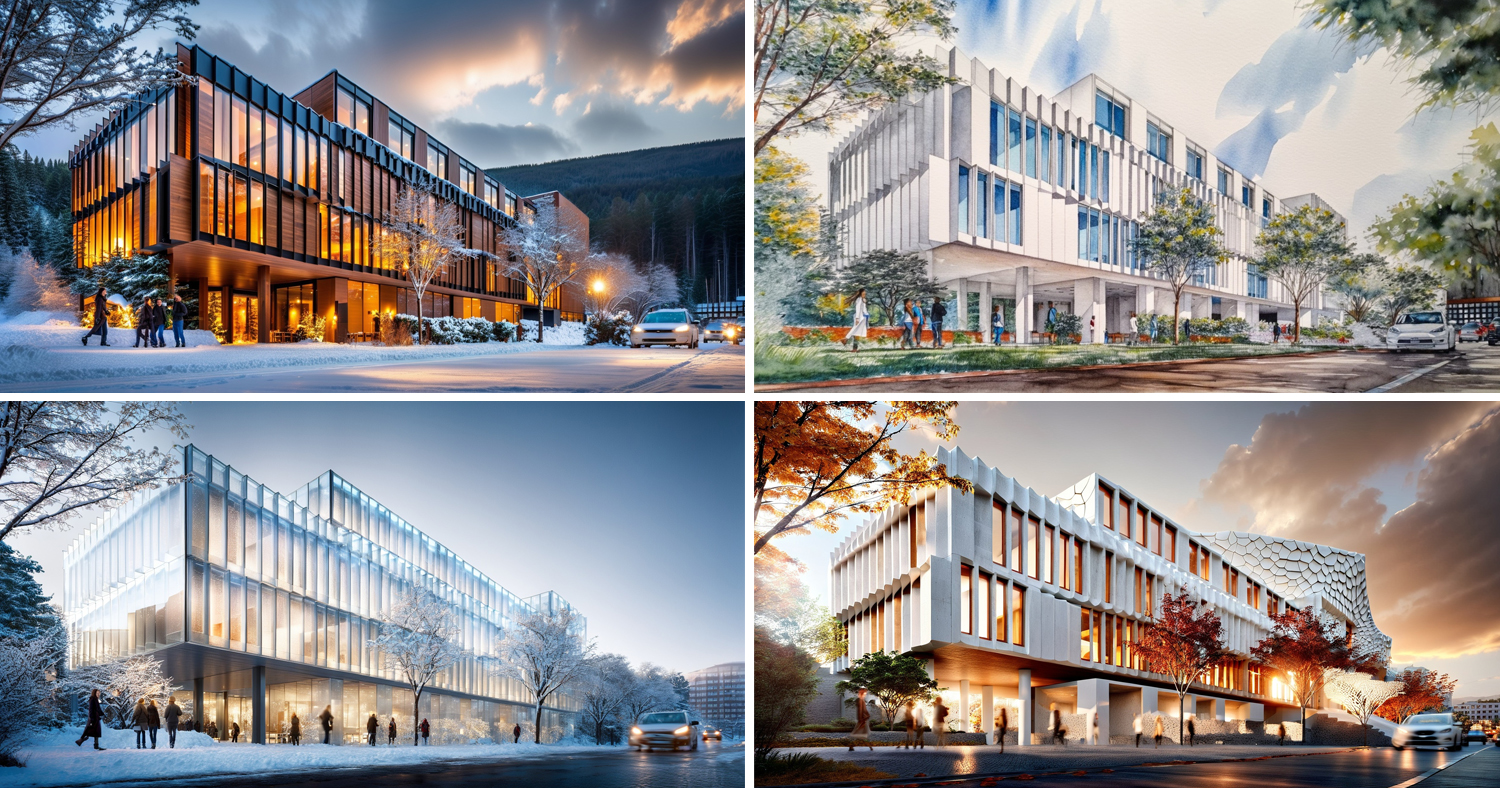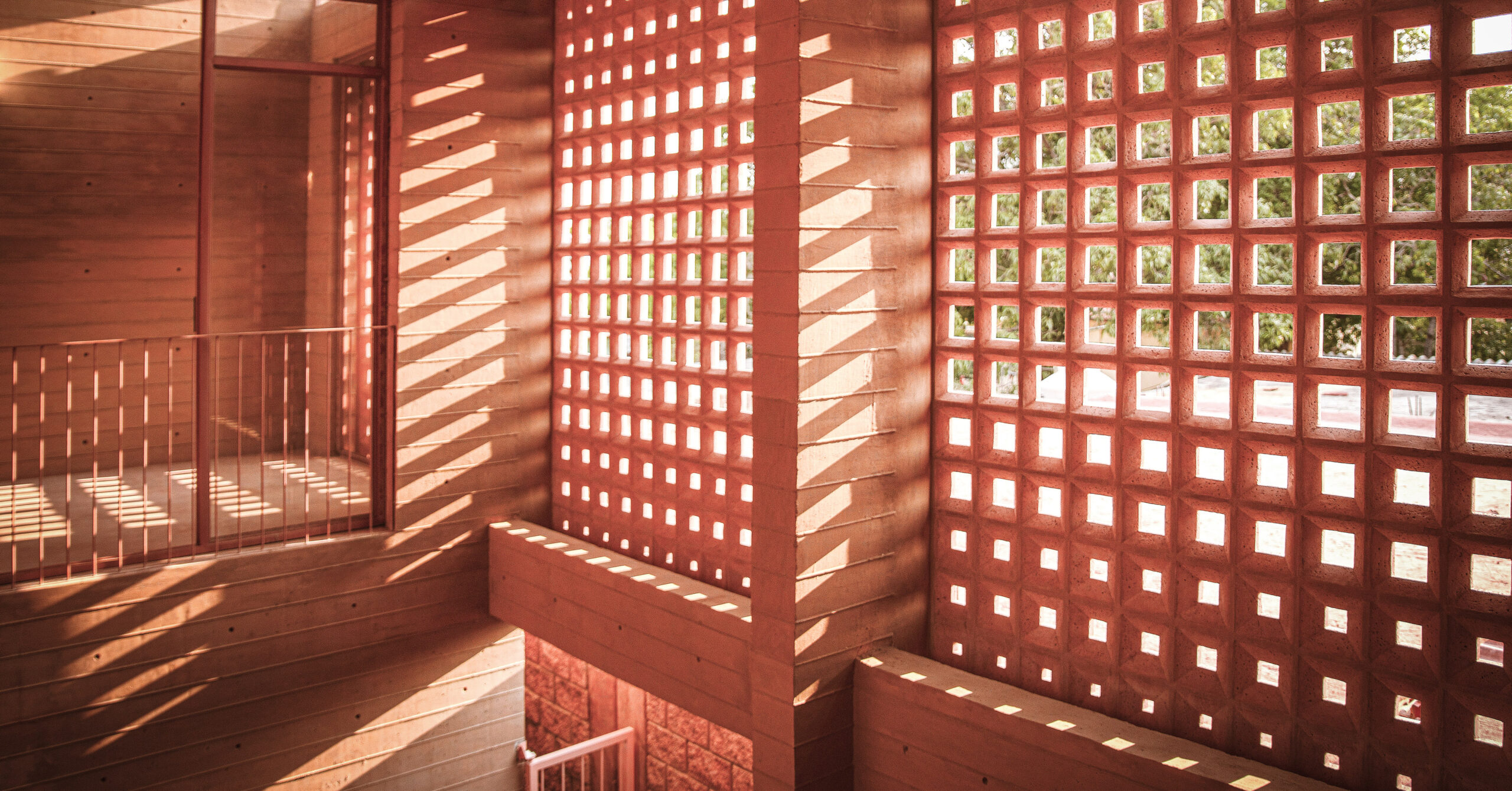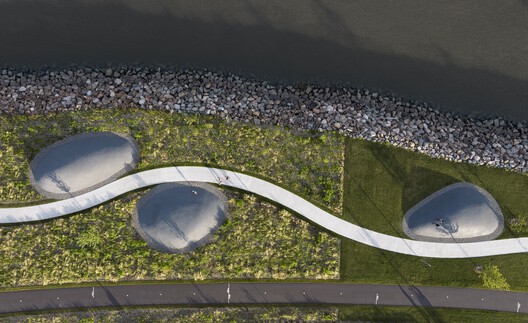German pavilion stress-tests people at Venice Architecture Biennale


The German pavilion at this year's Venice Architecture Biennale, which is revealed exclusively here, has turned urban climate change into a "physical and psychological experience" by creating contrasting stress and de-stress rooms.
Named Stresstest, the pavilion curated by Nicola Borgmann, Elisabeth Endres, Gabriele G Kiefer and Daniele Santucci aims to make the reality of urban climate change physically tangible.

"Stresstest turns the future reality of the urban climate into a physical and psychological experience, to show that architecture and landscape planning can – and must – create climate-resilient cities," the curators told Dezeen.
"Extreme heatwaves are becoming the new norm," they continued. "If we don't act now, they will have severe consequences for our daily lives, our infrastructure, our economies – and our health."

Within the pavilion, the team created a pair of contrasting rooms to demonstrate both the impact of climate on cities and some potential solutions.
Within the dark and foreboding stress room, the team placed a large metal sculpture by artist duo Rasthofer/Neumaier.
The 50-square-metre piece of metal creates a cramped space that is artificially heated using heating mats hung from the ceiling, which were powered by solar panels on the pavilion's roof.
According to the curators, the metal sculpture will reflect and intensify the heat on visitors to the pavilion. Infrared cameras positioned in the room will capture the visitors' heat maps, which are projected onto the room's walls.

The curators believe that this experience will give visitors a physical insight into the challenges that people will face as cities become hotter.
"The concept of a stress test originates in medicine, where it is used to reveal hidden vulnerabilities in the heart by observing how the body responds to strain," they said.
"In finance, stress tests assess the resilience of banks under crisis scenarios, helping regulators identify systemic risks. Urban heatwaves function in a similar way: they expose weaknesses in the way our cities are built – and in how we plan, design, and govern them," they continued.
"Therefore, our exhibition turns the pavilion into a form of individual stress test – one that invites each of us to confront the realities of climate stress, and to rethink how we plan and build, before it's too late."

Directly opposite the stress room, the curators created a calm de-stress room to demonstrate strategies that could be used to reduce the heat of cities.
The bright space contains three common hornbeam trees in large white pots. The trees were chosen for their storm and drought resistance.

"By physically experiencing both extremes – heat and congestion versus cool and calm – we hope visitors won't just understand climate stress on an intellectual level but physically feel it," said the curators.
"This emotional and sensory shift between the stress and destress spaces makes the urgency of resilient planning tangible and immediate."

Between the two spaces, the curators created a film that focuses on the impacts of cities becoming hotter.
Overall, the curators hope that physically feeling the future impacts of climate change on cities will underline the urgency of the situation.
"We all know the urgency," they said. "The key strategies needed to safeguard the liveability of our cities are well known."
"They're not rocket science: cities have to unseal surfaces, implement climate-adaptive rainwater systems, enable shading and ventilation in public space – and, above all, recognise the crucial role of trees. We all know what must be done, so why do we still hesitate?" they continued.
"Perhaps the most critical issue is that the true urgency of the crisis still hasn't fully registered in our collective consciousness. We must begin to feel that urgency to truly take action."
Other pavilions revealed exclusively on Dezeen today include the Finland pavilion, which includes an immersive exhibition that tells the "untold story" of the Alvar Aalto-designed building and the Danish pavilion, which has been turned into a construction site.
The photography is by Patricia Parinejad.
The Venice Architecture Biennale takes place 10 May to 23 November 2025 at various locations across Venice, Italy. See Dezeen Events Guide for information about the event, plus a list of other architecture and design events taking place around the world.
The post German pavilion stress-tests people at Venice Architecture Biennale appeared first on Dezeen.












